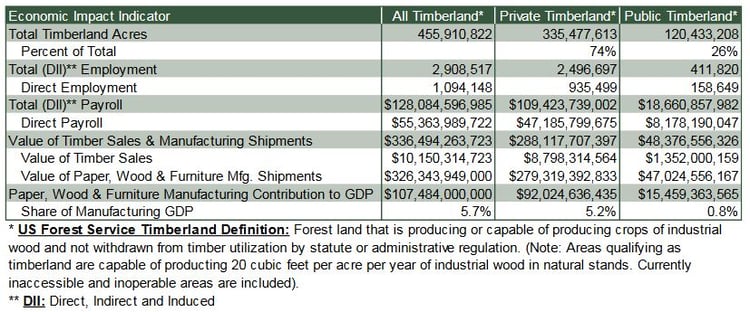2 min read
Exemplifying the Circular Economy: National Forest Products Week 2020
Forest2Market
:
October 19, 2020

October 18-24, 2020 is National Forest Products Week! To recognize the importance of products derived from America’s forests, the Congress, by Public Law 86-753 (36 U.S.C. 123), as amended, has designated the week beginning on the third Sunday in October of each year as "National Forest Products Week" and has authorized and requested the President to issue a proclamation in observance of this week each year.
During National Forest Products Week 2020, we celebrate America’s forests and the many products they provide while committing to the sustainable stewardship of these natural resources to meet our nation’s needs—both now and in the future. Expanding markets for wood products are good for our environment, as well as our regional and national economies. A diversified wood products industry enhances the resiliency of our ecosystems, helps to sequester carbon and mitigate climate change, and creates jobs in rural communities.
Working Forests Benefit Us All
Per recent data from the US Forest Service’s Forest Inventory and Analysis (FIA) Program, forest and woodland area in the United States has stabilized at 823 million acres following decades of expansion. Forest and woodlands now comprise over one-third of the US landscape and contain 1 trillion cubic feet of wood volume despite a booming population and ever-sprawling urban centers.
Working forests—those acres of forestland (private and public) that are managed for the production of timber—provide the raw material necessary to support 2.9 million jobs in the forest products industry with total direct, indirect and induced payrolls of $128 billion!

READ MORE: How Much Timber Does the US Harvest, and How is it Used?
Moreover, Forest2Market’s in-depth analysis of historical data over the past six decades documents the link between increased demand for forest products and increased forest inventory in the US South. It explains that the dramatic increase in forest inventory was made possible by even more remarkable increases in forest productivity, especially on privately-owned timberlands.
- Since the middle of the twentieth century, the amount of timberland in the US South has remained stable. During this period, economic growth and increased construction spurred consumer demand for forest products, which led to a significant increase in timber harvests (removals) by almost 60 percent.
- As the US population and GDP grew in the last half of the twentieth century, so did its demand for wood-based products. Annual timber removals nearly doubled by 1996 and were 57% higher in 2015 than they were in 1953.
- However, increased demand has not depleted forests! The number of timberland acres has remained stable, increasing by 3%. At the same time, total inventory has doubled (+108%, from 142 to 296 billion cubic feet) because growth has outpaced removals.
- Statistical analyses show that increased demand is associated with more acres, better growth and larger inventories
The entire forest products industry—including wood products, pulp & paper, bioenergy and wood pellet manufacturers—takes the harvesting and regeneration of trees very seriously. The forest value chain has evolved over time to efficiently utilize every single part of a harvested tree. The result is an environmental/industrial relationship that produces valuable products that we have all come to depend upon, while also using low-value materials for beneficial purposes where markets exist.
An increase in forest stocking levels is the ultimate environmental benefit, which naturally occurs when landowners manage their timber resources for economic purposes. It is this symbiotic relationship that, most importantly, incents timberland owners to keep forestlands forested and invest in advanced timber management practices, which provides both economic benefits to the timberland owner and environmental benefits to all of us.





